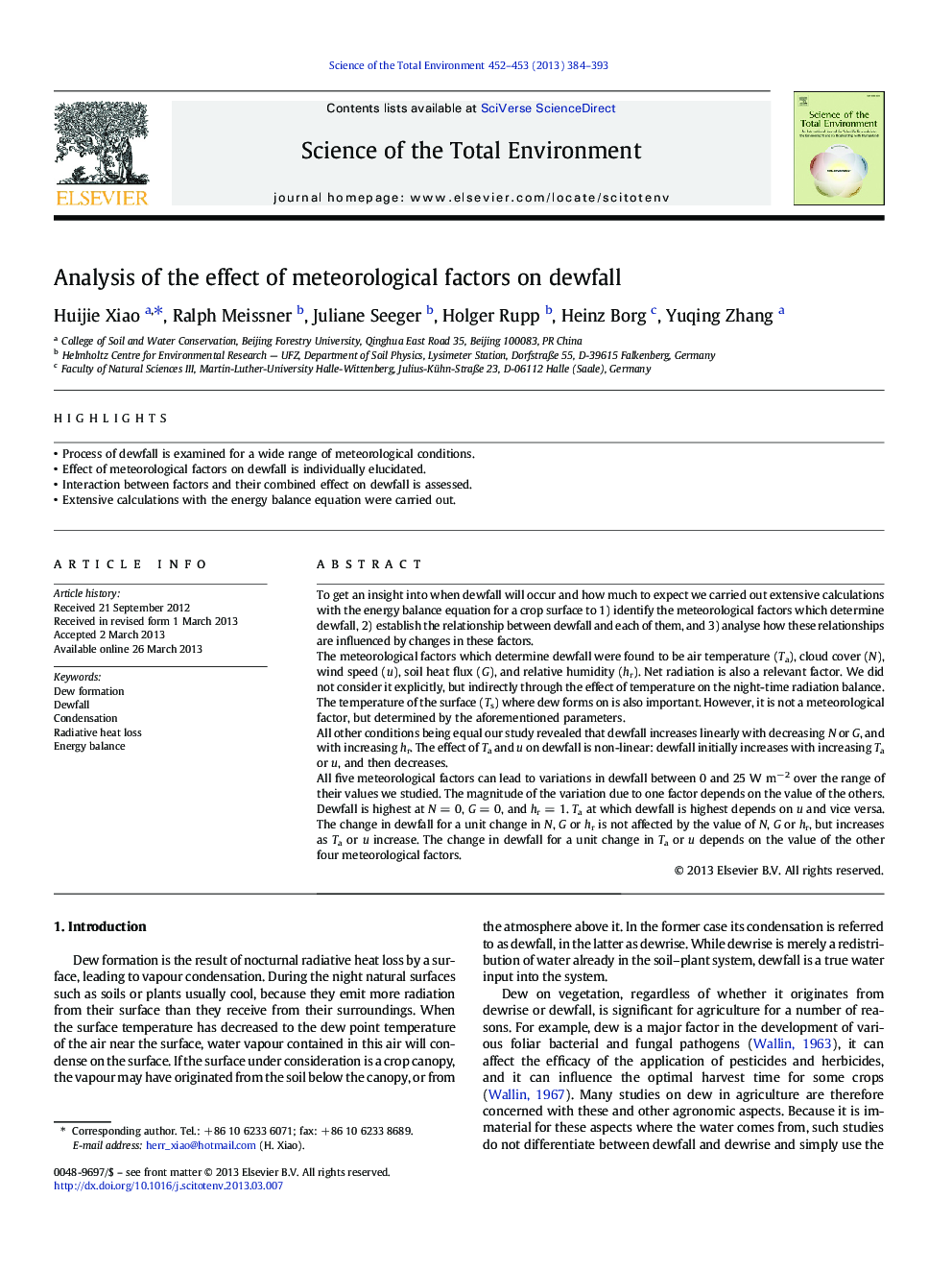| کد مقاله | کد نشریه | سال انتشار | مقاله انگلیسی | نسخه تمام متن |
|---|---|---|---|---|
| 4428775 | 1619803 | 2013 | 10 صفحه PDF | دانلود رایگان |

• Process of dewfall is examined for a wide range of meteorological conditions.
• Effect of meteorological factors on dewfall is individually elucidated.
• Interaction between factors and their combined effect on dewfall is assessed.
• Extensive calculations with the energy balance equation were carried out.
To get an insight into when dewfall will occur and how much to expect we carried out extensive calculations with the energy balance equation for a crop surface to 1) identify the meteorological factors which determine dewfall, 2) establish the relationship between dewfall and each of them, and 3) analyse how these relationships are influenced by changes in these factors.The meteorological factors which determine dewfall were found to be air temperature (Ta), cloud cover (N), wind speed (u), soil heat flux (G), and relative humidity (hr). Net radiation is also a relevant factor. We did not consider it explicitly, but indirectly through the effect of temperature on the night-time radiation balance. The temperature of the surface (Ts) where dew forms on is also important. However, it is not a meteorological factor, but determined by the aforementioned parameters.All other conditions being equal our study revealed that dewfall increases linearly with decreasing N or G, and with increasing hr. The effect of Ta and u on dewfall is non-linear: dewfall initially increases with increasing Ta or u, and then decreases.All five meteorological factors can lead to variations in dewfall between 0 and 25 W m− 2 over the range of their values we studied. The magnitude of the variation due to one factor depends on the value of the others. Dewfall is highest at N = 0, G = 0, and hr = 1. Ta at which dewfall is highest depends on u and vice versa. The change in dewfall for a unit change in N, G or hr is not affected by the value of N, G or hr, but increases as Ta or u increase. The change in dewfall for a unit change in Ta or u depends on the value of the other four meteorological factors.
Journal: Science of The Total Environment - Volumes 452–453, 1 May 2013, Pages 384–393